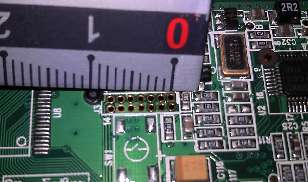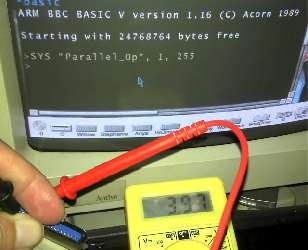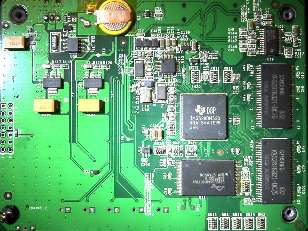Rick's b.log - 2011/04/11
You are 18.191.107.181, pleased to meet you!
Rick's b.log - 2011/04/11 |
|
| It is the 24th of November 2024 You are 18.191.107.181, pleased to meet you! |
|
mailto: blog -at- heyrick -dot- eu
This is bound to cause consternation in the EU, and one commentator on the BBC news website goes all Daily Mail with: Its the end of the Euro and a credit crisis in the zone. Thank Gordon Brown for not joining the Euro. Euro countries could be in recession for the next 50 years.".
The amount of fail in that statement is simply amazing. Sure, the European Economic Zone is struggling right now, but this does not necessarily imply the Euro currency is the same thing - lest we forget that Iceland is not a Euro-zone country (they use the kroner), and neither for that matter is the United Kingdom (pound).
It is a hard call on Iceland. The very basic bottom line is the country's banking system owes money and they should not renege on this.
Perhaps the fair response is for the Landsbanki to sell its assets to meet the debt, and following this the country will have a "national debt" that it will pay off as it can. The United Kingdom and The Netherlands will receive partial payment in a lump sum from the assets, and the rest will be a trickle. After all, the UK only recently paid off its debt to America following the second world war...
I am thinking that an open-pin header to mate with a little plug would be good, but look at the size of the thing! I think this is the 1.27mm pitch, which aren't so easy to find. I did find something, but 2x10. I'll need to cut it to fit, not a big deal. Perhaps the matching plug will be harder - would a laptop-drive IDE cable work? I'll need to find one and measure it.
The next issue... Looking at datasheets, it seems that, in general, logic chips don't like being driver much over their supply voltage. In order to best protect the ARM side of things, I would use a 74-series buffer driven directly from the JTAG 3.3V line. This would mean the inputs to the chip are, nominally, 5V and the outputs to the ARM would be 3.3V. There is, however, a risk of damaging the buffer chip (so I'd better make it socketed and get several!).
Luck is on our side, however, in that TTL needs around 2.8V-plus to trigger a logic high, so is the output of a parallel port going to be 5V?
I went to my PC. And I stopped. I'd need to load a development environment. I'd need to write code. Compile it. Test it. Then along the way argue with Windows about whether or not I have the right to touch hardware...
So instead I started up my RiscPC, opened a taskwindow (like the Windows command window), entered BASIC, and typed one command...
The command you can see (and I've made the text real big like in the movies ☺) simply instructs the operating system to set the eight data signals to all high.
I am also interested in pulling a firmware dump from my older PVR to see what it runs. It'll never hack a port of the Neuros firmware as the Flash is only 8MiB, plus there is only the one USB socket (plus a non-connected unpopulated space for what looks like a CF card, but this I guess never made it to production units). Just for interest's sake, mind you.
Now, I guess, to draw a schematic of the interface and then work out a veroboard layout...
Iceland... says no.
The Icelandic banks wents tits-up. A bunch of people lost a bunch of money. Two governments, in particular (UK and Netherlands) aided their citizens. Now those governments want to be repaid.
This, the second Icelandic referendum, has resulted in a no vote. It is pretty clear how the Icelandic populous think.
I think in the long run the United Kingdom will suffer for not being in the Euro - for trade between partner countries will be affected by banks skimming money from currency conversions, resulting in higher costs all round.
The problem is it would have ended up costing the Icelandic people. This is less fair, for if - say - the United Kingdom hit the crapper, or Ireland collapsed - would it be fair for the citizens to end up bailing out the debts of their country? The mismanagement of the banks land squarely in the laps of the populace?
It is, therefore, no surprise that the people voted no.
JTAG fiddles
In the continuing saga of the JTAG, we encounter a number of problems to overcome. The first is the connection...

Actually, frankly, given the number of homebrew projects that use 5V parts to integrate to 3.3V parts (SD cards off microcontrollers, etc), I'm surprised there isn't a dedicated chip (like a MAX232 sort of thing) specifically to do this.

And as you can see, the voltage was 3.97V, sometimes 4.0V).
This, with a small resistor in-line, would be okay to push into the 3.3V chip as it is only marginally over tolerance in its raw form (spec says Vcc+0.5V), and under a load and with resistance, it ought to drag it down to be in spec.
I will, of course, need to measure some other equipment (PCs etc) to see if this "about 4V" is average, or if it is just the RiscPC is lower than others.
I'm intrigued to know what it runs, for the shutdown (writes schedules etc to memory someplace) takes a good 30 seconds, but power-up takes maybe 10-15 seconds. What is it running? My guess is a mini custom OS that gives the bare essentials. But you'll note, otherwise... TMS320DM320, 64MiB RAM, AIC23, tvp5150... any of that sound familiar?

joe, 14th April 2011, 02:36
The JTAG is also used to unbrick some bricked devices, so the more we know about, the better, thanks Rick.
Joe
| © 2011 Rick Murray |
This web page is licenced for your personal, private, non-commercial use only. No automated processing by advertising systems is permitted. RIPA notice: No consent is given for interception of page transmission. |